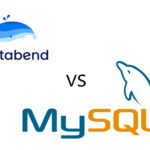Introduction: Choosing the Best Data Sync Tool
In today’s data-driven world, seamless synchronization between databases is crucial for ensuring consistency and accuracy. When working with MySQL, PostgreSQL, and SQL Server, finding the right tool for data synchronization can be challenging. Here, we’ll compare five popular tools: Apache Nifi, Airtable, Airbyte, Meltano, and SymmetricDS. We’ll evaluate each on its ability to sync data across different databases, such as MySQL to PostgreSQL and SQL Server, and explain why SymmetricDS is the most effective solution for this task.
1. Apache Nifi: Data Flow Automation Tool
Pros:
- Highly Scalable: Nifi is designed for large-scale data flows, providing a visual interface to automate and control data transfer between systems.
- Real-Time Processing: Supports streaming data and allows for real-time data movement.
- Extensive Connectors: Provides connectors for a variety of data sources, including databases like MySQL, PostgreSQL, and SQL Server.
Cons:
- Complex Setup: Requires significant setup and configuration, especially for database synchronization.
- Heavyweight: Not as lightweight or specialized for database replication, more suited for data flows in general.
- Learning Curve: Requires time to master the user interface and understanding of data flow concepts.
2. Airtable: Cloud-Based Database for Collaborative Work
Pros:
- User-Friendly Interface: Designed for non-technical users, with an easy-to-use, spreadsheet-like interface.
- Cloud-Native: Airtable works well for collaboration and sharing across teams.
Cons:
- Limited Database Sync Capabilities: Airtable is not built for syncing large databases like MySQL, PostgreSQL, or SQL Server.
- No Native Database Connectors: Requires third-party tools or APIs for database integration.
- Performance Constraints: Not suitable for large-scale data synchronization or replication.
3. Airbyte: Open-Source Data Integration
Pros:
- Open Source: Free to use and provides flexibility in deployment.
- Wide Range of Connectors: Supports many databases and data sources.
- Incremental Data Sync: Handles incremental loading and updates effectively.
Cons:
- Limited Native Replication: Airbyte is primarily designed for batch-based data integration, not for real-time database replication.
- Configuration Complexity: Setting up and configuring syncs between MySQL, PostgreSQL, and SQL Server can require technical expertise.
- Less Flexibility: Doesn’t offer advanced features like conflict resolution or bi-directional synchronization out of the box.
4. Meltano: DataOps for the Modern Data Stack
Pros:
- Open-Source and Extensible: Provides an open-source platform for data integration and ETL pipelines.
- Modern Data Stack: Integrates well with modern tools, offering connectors for various databases.
- Integration with dbt: Seamlessly integrates with dbt for transformation processes.
Cons:
- Not Specialized for Real-Time Sync: Meltano is more suited for batch processing, making it less efficient for real-time or continuous database synchronization.
- Steeper Learning Curve: Setting up Meltano with multiple databases and achieving synchronization requires technical expertise.
5. SymmetricDS: Database Replication and Synchronization
Pros:
- Advanced Synchronization Features: SymmetricDS is purpose-built for database synchronization and replication across different database systems, including MySQL, PostgreSQL, and SQL Server.
- Bi-Directional Sync: Supports bi-directional data sync, conflict resolution, and supports both large-scale and real-time synchronization.
- Cross-Platform Compatibility: Works across heterogeneous databases, making it ideal for syncing between MySQL, PostgreSQL, SQL Server, and more.
- Incremental Sync: Optimized for syncing changes in near-real-time, ensuring minimal latency.
- Enterprise-Level Features: Supports complex use cases, including master-slave configurations, multi-master setups, and more.
Cons:
- Requires Technical Setup: Although it’s user-friendly, setting up and configuring SymmetricDS requires some technical knowledge and experience.
- Complexity for Small-Scale Projects: Might feel too feature-rich for smaller projects with simple data integration needs.
Why Choose SymmetricDS for MySQL, PostgreSQL, and SQL Server Sync?
Given the strengths and weaknesses of the tools discussed, SymmetricDS stands out as the best solution for syncing MySQL, PostgreSQL, and SQL Server databases. Here’s why:
- Cross-Database Compatibility: SymmetricDS excels in replicating and synchronizing data between different databases, even with varied platforms like MySQL, PostgreSQL, and SQL Server.
- Real-Time and Incremental Sync: Unlike many other tools, SymmetricDS supports real-time data synchronization with minimal lag and can sync only changes (incremental sync), optimizing performance and reducing data load.
- Bi-Directional Sync: SymmetricDS offers bi-directional sync and conflict resolution, which is crucial for scenarios where data is updated on multiple databases.
- Enterprise-Grade Performance: Whether you’re managing a small setup or a large enterprise, SymmetricDS scales well to meet diverse data replication needs.
How to Install and Use SymmetricDS for Database Sync
Step 1: Install SymmetricDS
- Download SymmetricDS: Visit the official SymmetricDS website and download the appropriate version for your system (Windows, Linux, or Mac).
- Extract Files: After downloading, extract the archive to a suitable directory.
- Install Java: SymmetricDS requires Java to run. Ensure you have Java 8 or later installed on your machine.
- Set Environment Variables: Add the SymmetricDS directory to your system’s PATH and set JAVA_HOME to your Java installation.
Step 2: Configure SymmetricDS for Database Sync
- Create Database Connections:
- Edit the
sym_service.conffile to configure your database connections (for MySQL, PostgreSQL, and SQL Server). - Example for MySQL:
properties engine.name=server1 db.driver=com.mysql.jdbc.Driver db.url=jdbc:mysql://localhost:3306/mydb db.user=root db.password=rootpassword - Repeat for PostgreSQL and SQL Server with the respective connection details.
- Set Up Synchronization:
- Use the SymmetricDS web interface to set up synchronization. Navigate to
http://localhost:31415(default port). - Create Channels and Triggers to specify which tables and data you want to sync.
- Configure the sync direction (one-way or bi-directional) depending on your needs.
- Start the Synchronization Process:
- After configuring, restart SymmetricDS to initiate synchronization.
- Monitor the process via the web console or log files.
Step 3: Monitor and Maintain
- Log Files: Check SymmetricDS logs for any synchronization errors or issues.
- Web Console: Use the web interface to monitor the sync progress, resolve conflicts, and view sync statistics.







Leave a Reply